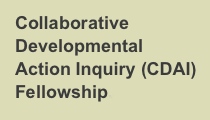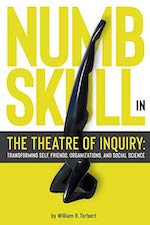After years on the back burner, the distinction between more common types of horizontal, skills-based leadership development and increasingly necessary, vertical, capacity-developing experiences for leaders seems to be the new rage. White papers from the Center for Creative Leadership and the MetaIntegral Institute advocate vertical development (citing research based on AIA’s Global Leadership Profile). Old Harvard friend, Bob Kegan, has spoken at the Royal Institute for the Arts on the potential for vertical development among the growing worldwide Third Age cohort of humanity. Frederic Laloux’s Reinventing Organizations highlights the need for vertical development if leaders are to take the reinventive stance.
We at AIA are seeking to cultivate such vertical leadership development through our books (Jennifer Garvey Berger’s Simple Habits for Complex Times and Hilary Bradbury’s Handbook of Action Research (3rd-edition), both appearing in 2015)… through Action Inquiry & Global Leadership Profile workshops for executives, consultants, and researchers (click here to see flyer for next one in London, March 2015)… as well as through our advanced Alchemists’ Workparties and our own AIFellowship retreats.
The (profound) trick of the vertical development process is that it is vertical both ways, or else it is mere sham and delusion – mere talking of a new talk. It is not merely a matter of developing ‘altitude’ or ‘headroom’ – a new awareness of contexts, uncertainties, and possibilities – a more panoramic view. It is also a matter of transforming one’s embodied, conversational processes in our on-the-ground, moment-to-moment organizing actions of each day. Our “Collaborative Developmental Action Inquiry” approach in our workshops, consulting, and even our GLP measure combines the up (developmental inquiry) and the down (collaborative action) of the vertical approach.
For example, our GLP measure, of which of the seven leadership action-logics a client currently works from, does not merely result in a label we authoritatively pin on the client from on high. Instead, the process invites the client to do his or her own leadership action-logic diagnosis (before receiving our results) to be compared with our measure. In addition, the client (or client’s coach) is encouraged to gather relevant data from peers on the ground. Thus, the client has three different types of data (subjective, intersubjective, and objective) to work with in determining the point from which he or she is embarking on a next developmental step.
Since development to the later leadership action-logics cannot be inculcated from the top down or the outside in, but rather require a person’s deepest motivation and most inventive strategizing to blossom, it is key that the person feel well recognized (as well as partially liberated) by his or her current developmental location. Our workshops intensify this process by mirroring to participants how their actions reflect different action-logics and either support or inhibit other members’ development. So does our shadow coaching of participants who seek to be Certified to use the GLP with their own clients. We look forward to the possibility of working with you in the near future.
Bill Torbert








{ 0 comments… add one now }